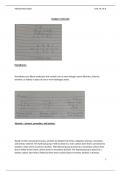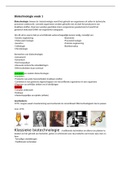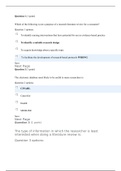Ensayo
Unit 14 LA: A (Designer molecules)
- Grado
- Institución
This assignment has achieved distinction grade and was written in high quality to ensure that the criteria are met, this assignment contains all of the necessary contents such as Haloalkanes Nucleophilic substitution and elimination conditions reaction, formula, alcohols, amines, aldehydes and keto...
[Mostrar más]












